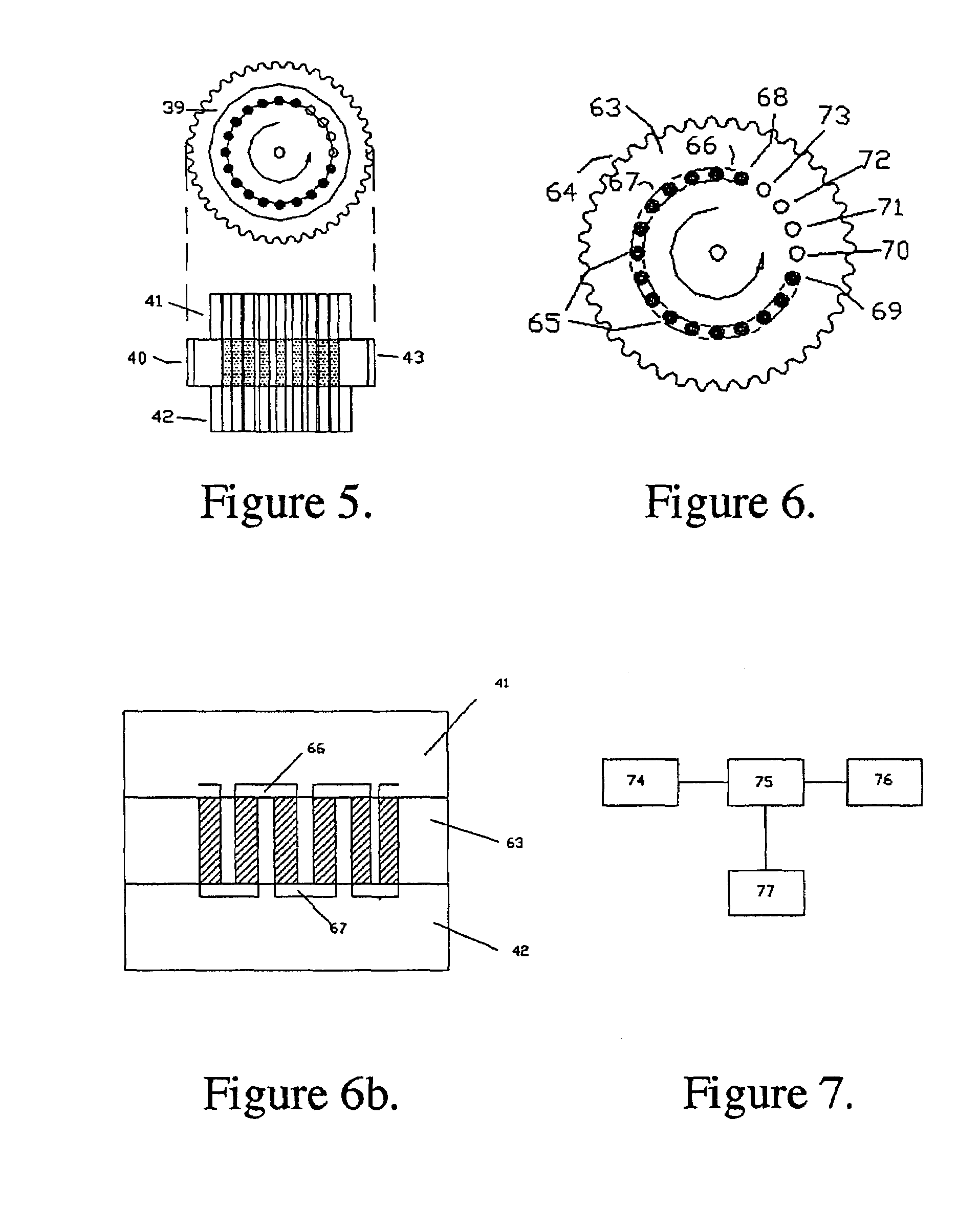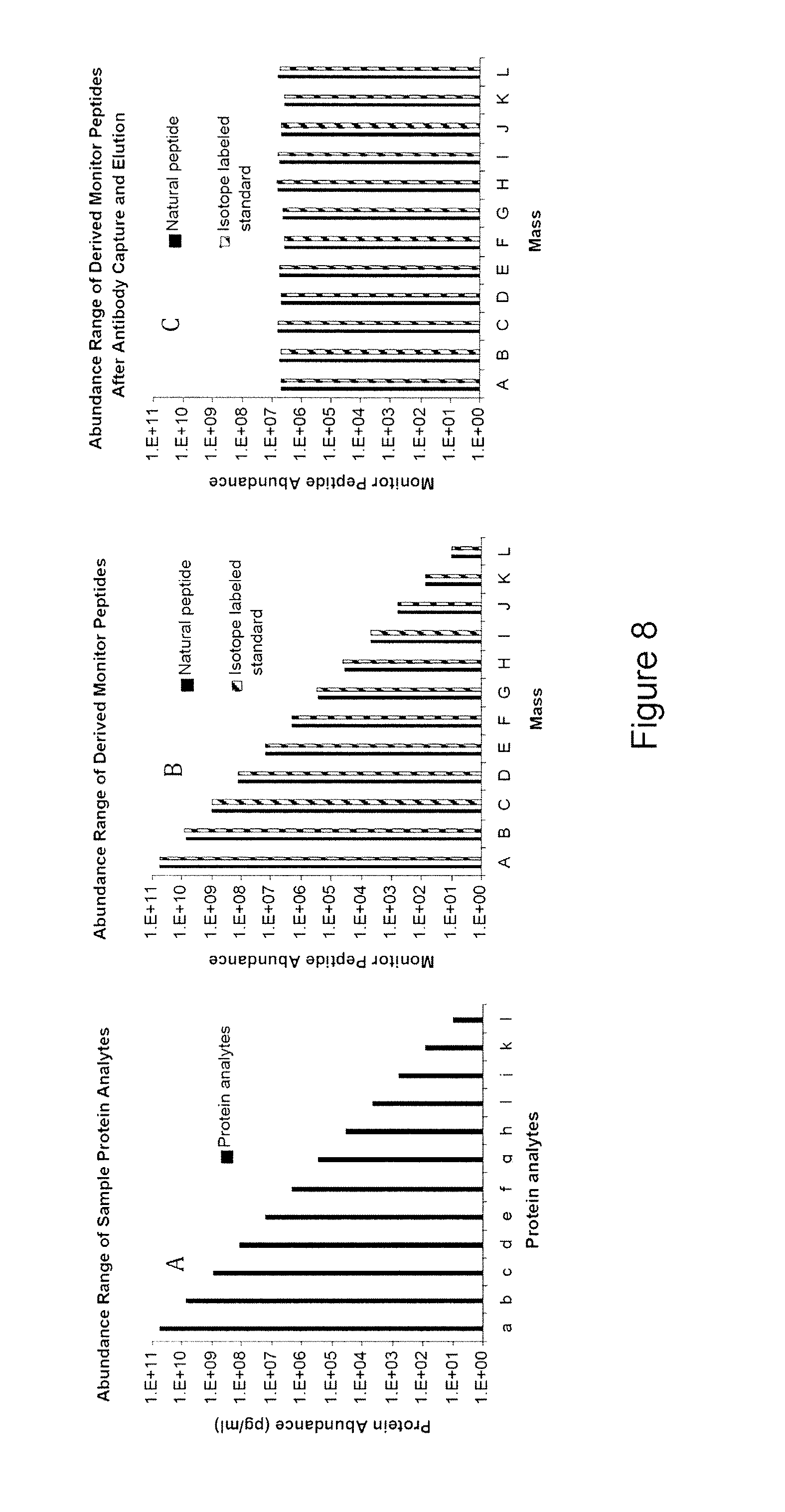High sensitivity quantitation of peptides by mass spectrometry
a mass spectrometry and peptide technology, applied in the field of protein quantitation assays, can solve the problems of large number of samples, difficulty in applying prior art techniques (e.g., 2d gels), and the dynamic range and sensitivity of ms assays applied to very complex mixtures, so as to reduce the complexity of the mixture presented, not to overwhelm the resolution and sensitivity, and effectively select the monitor peptide sequences
- Summary
- Abstract
- Description
- Claims
- Application Information
AI Technical Summary
Benefits of technology
Problems solved by technology
Method used
Image
Examples
example
[0118]A database of 289 proteins detected in human plasma by various means was constructed by combining information from textbooks, catalogs of diagnostic assays, and a search of the scientific literature. Amino acid sequences for these proteins were downloaded and stored in a Microsoft Access database as text fields. Each protein sequence was processed in an Excel spreadsheet by a macro procedure that created a list of tryptic peptide fragments. A series of parameters was computed for each peptide sequence, including length, mass, expected net charge at neutral pH, total charged groups, HoppWoods hydrophilicity (HWH) and normalized HWH (HWH / number of amino acids), and the numbers of Cys, Trp, Pro and Met residues. A first selection of usable peptides was made based on the following requirements evaluated by an Excel macro: length>7 and −0.5 and 800. The results (peptide sequences, and computed parameters) were stored in the database. A total of 10,204 peptides were thus derived, of...
PUM
| Property | Measurement | Unit |
|---|---|---|
| length | aaaaa | aaaaa |
| volume | aaaaa | aaaaa |
| volume | aaaaa | aaaaa |
Abstract
Description
Claims
Application Information
 Login to View More
Login to View More - R&D
- Intellectual Property
- Life Sciences
- Materials
- Tech Scout
- Unparalleled Data Quality
- Higher Quality Content
- 60% Fewer Hallucinations
Browse by: Latest US Patents, China's latest patents, Technical Efficacy Thesaurus, Application Domain, Technology Topic, Popular Technical Reports.
© 2025 PatSnap. All rights reserved.Legal|Privacy policy|Modern Slavery Act Transparency Statement|Sitemap|About US| Contact US: help@patsnap.com



